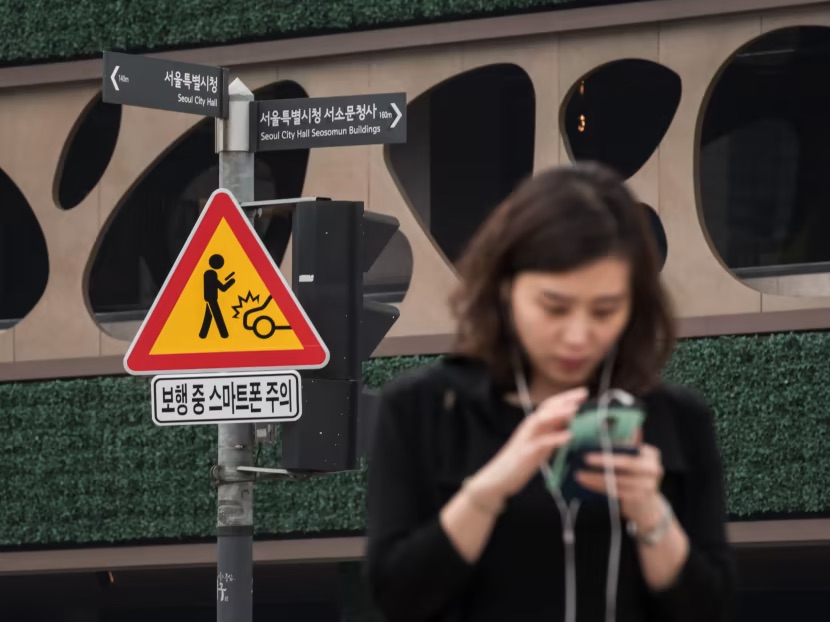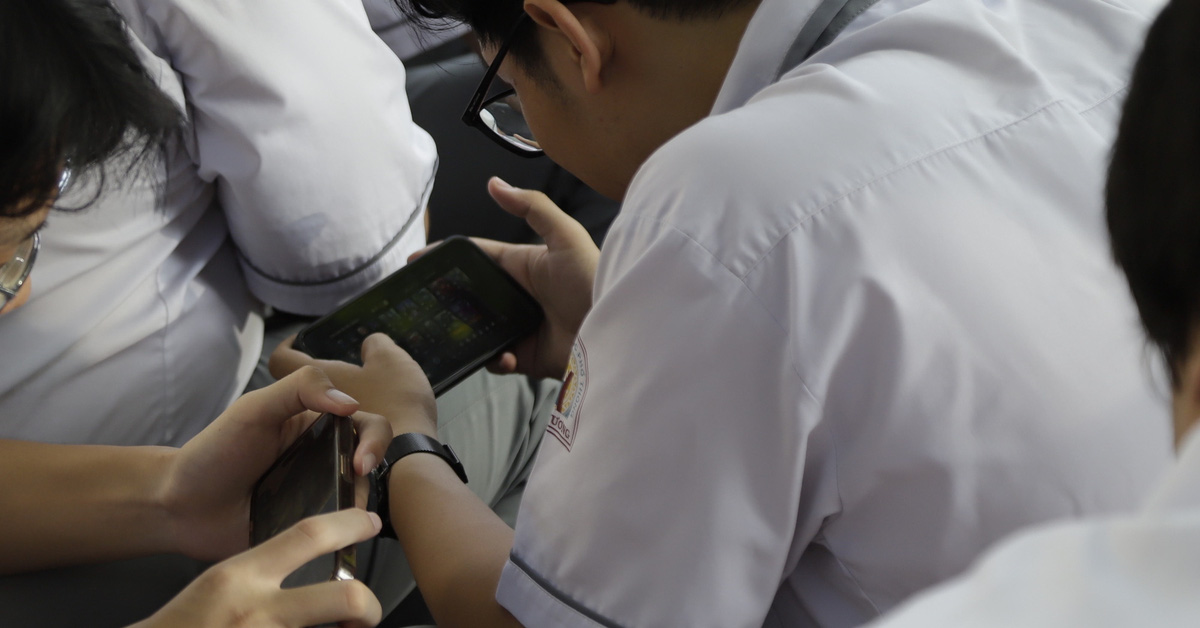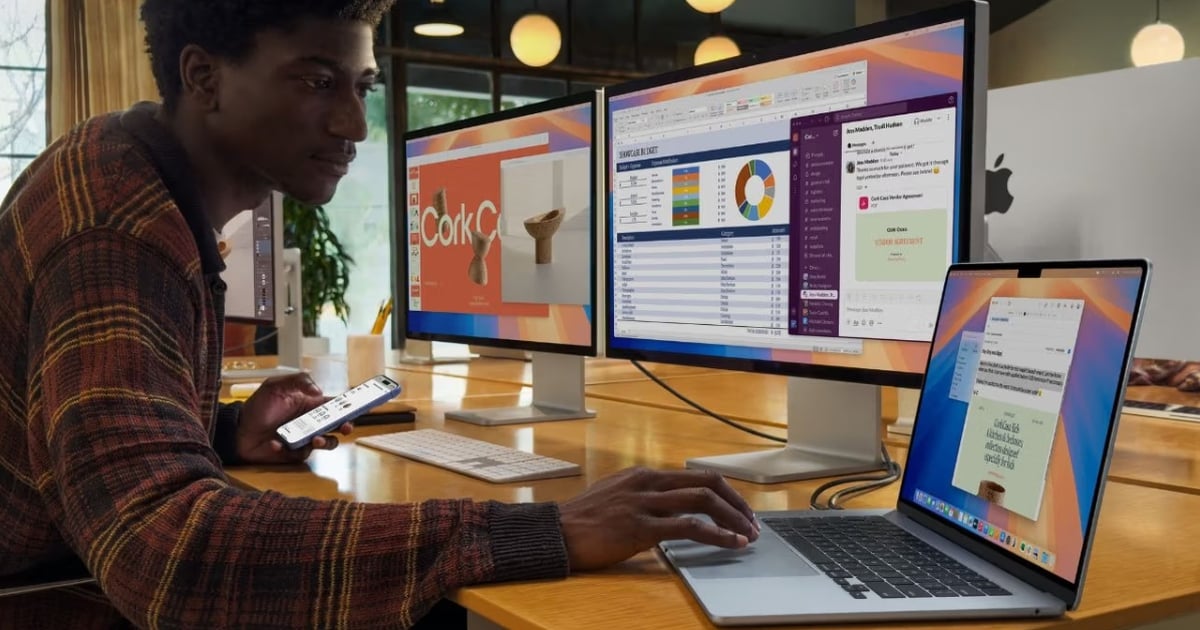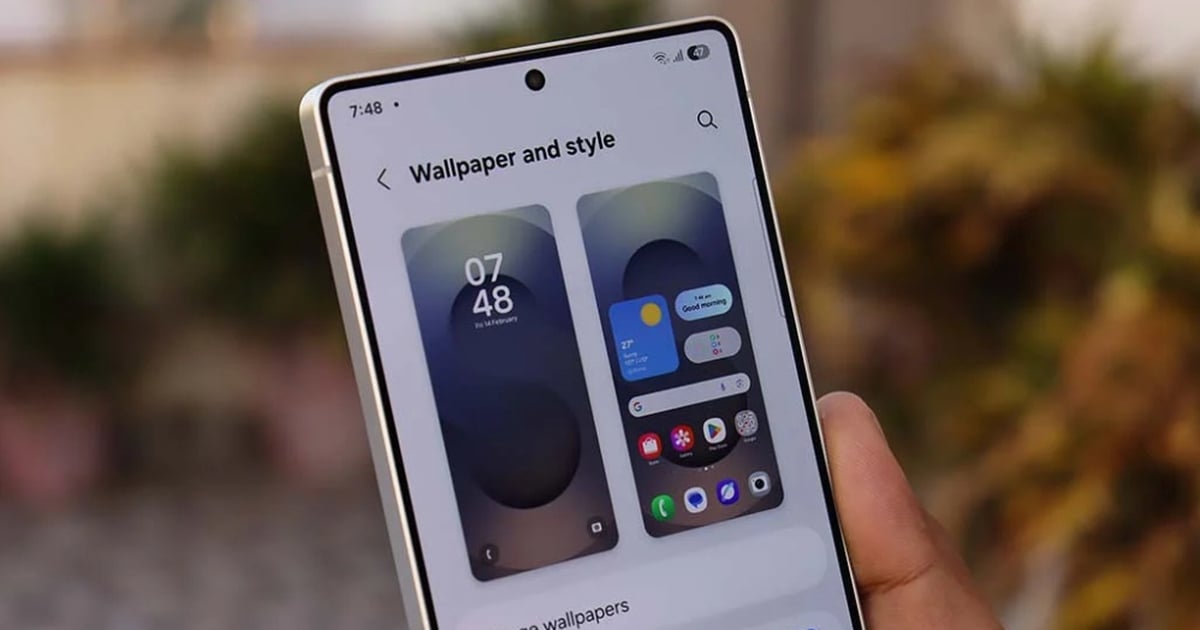A recent report in the US found that about a quarter of pedestrians at intersections are glued to their mobile devices. "I don't think people realize how distracted they are and how quickly things change when they're walking and using their phones," said Wayne Giang, an associate professor at the University of Florida (USA). He has spent a lot of time studying the link between phone use and accidents while walking today.
According to the NYT , mobile devices can cause a state of “unconscious blindness,” as some experts call it. Not only do they distract attention from surrounding traffic conditions, phones can also alter mood, change gait, posture and interfere with the ability to safely move from one point to another on a route.

Using a phone while walking causes changes in gait, speed of movement, bad mood as well as accident risks for traffic participants.
How do phones change walking behavior?
Associate Professor Wayne Giang believes that people who use their phones while walking will automatically adjust their movements based on reflex. A video recording of pedestrians shows that those who use their phones while walking move 10% slower than those who focus on their steps.
"You'll see some changes in gait that reflect slower movement," says Patrick Crowley, project manager at the Technical University of Denmark. "People will take shorter strides and spend more time with both feet on the ground at the same time."
This change increases traffic on the pedestrian crossing. If walking is an important daily physical activity, walking more slowly will have consequences for human physical health, according to Elroy Aguiar, Associate Professor of Exercise Science at the University of Alabama (USA).
Looking down at your smartphone while walking (when your natural posture is to stand up straight) increases the weight and pressure on the muscles in your neck and upper back, causing the symptom of "text neck". Research in the health journal Gait & Posture shows that these problems reduce the ability to maintain balance, while increasing the risk of tripping and falling.
Negative impact on mood
When scientists want to study stress, they often ask volunteers to perform multiple tasks at once because this is a reliable way to put a person into a state of stress.
In fact, there’s evidence that walking while using your phone can have a similar effect on your brain’s processing power. A treadmill experiment showed that people who used their phones while running produced more cortisol, a stress hormone (but too much of it can be harmful).

Several cities around the world have considered or passed regulations banning cell phone use while walking.
A 2023 report published in New Zealand studied the psychological effects of walking outdoors (in a park) on two groups of people: those who used their phones and those who did not. "In general, when people walk outdoors, they feel better, but that's what happens to the group that doesn't use their phones," said Elizabeth Broadbent, co-author of the study and professor of health psychology at the University of Auckland (New Zealand).
"In the group who walked and used their phones, the effects were reversed. Instead of feeling positive, they tended to have less positive thoughts, less happiness and lower levels of relaxation," Ms Broadbent added.
The researchers believe that these negative mental effects are a result of a “disconnection” with the surrounding environment, which goes against the widely accepted view that walking in natural spaces is beneficial to human mental health. “To achieve the benefits, it is important to pay attention to the surrounding environment while walking. Even walking while using a phone is an unpleasant action and that is enough to affect mood,” the professor analyzed.
The Dangers of Distraction
Most people know that using a phone while walking is dangerous. Some cities, such as Honolulu (Hawaii, USA) and Yamato (Japan), have even passed laws to limit distracted pedestrians. Associate Professor Wayne Giang used official data released by the US government between 2011 and 2019 to find nearly 30,000 pedestrian accidents involving phones. Most of the accidents occurred while participating in traffic on the street or sidewalk, but up to a quarter of the accidents occurred at home.
"Tripping over objects or falling down stairs are real dangers," Mr. Giang emphasized.
Age was a major factor in pedestrian accidents involving cell phones. Young people between the ages of 11 and 20 had the highest rate of accidents, followed by adults in their 20s (to 29), 30s (to 39), and 40s (to 49). The researchers believe this is because young people tend to use their phones more than older people.
Mr. Giang recommends that if you want to be safe, pedestrians should stop to check their phones, preferably avoiding areas where other people are moving. If you cannot control your phone habit while walking, try to avoid using it and pay more attention to walking in areas such as stairs, crosswalks, complex roads or uneven terrain. "These are places where accidents often occur," he said.
Source link



























































































Comment (0)